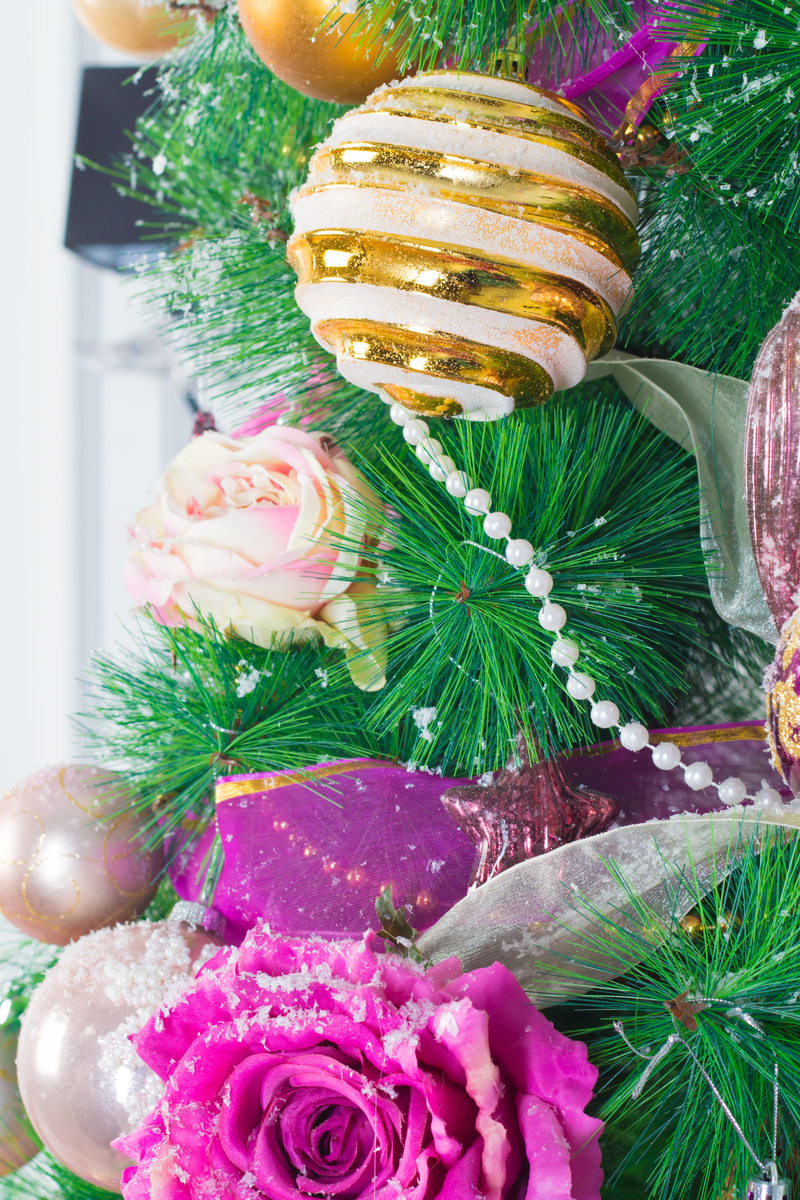Maximize the Life of Your Cut Flowers with Care
Posted on 03/07/2025
Maximize the Life of Your Cut Flowers with Care
Fresh cut flowers can instantly brighten up any space with their vibrant colors and fragrant scents. Whether you've received a beautiful bouquet as a gift or purchased a bunch to decorate your home, you naturally want to maximize the life of your cut flowers. With proper care and attention, you can prolong the freshness of your blooms and enjoy their beauty for days, or even weeks, longer. In this detailed guide, we'll explore various tips, techniques, and care routines designed to help you get the most out of your flowers.
Understanding the Lifecycle of Cut Flowers
Before delving into effective care strategies, it's important to understand what causes cut flowers to fade. Once flowers are separated from their root systems, they rely solely on water uptake through their stems. Factors like bacteria growth, poor water quality, and improper trimming can accelerate wilting. Learning the science behind cut flower longevity allows you to preserve cut flowers better and troubleshoot common issues.
- Water loss: The primary cause of wilting is the inability of the stem to take up enough water to replace what evaporates from the petals and leaves.
- Bacterial growth: Microorganisms can clog stem ends, preventing water absorption and causing flowers to droop.
- Nutrition: Cut flowers need carbohydrates for energy, which are no longer provided by the plant after cutting.

Essential Supplies for Flower Care
To effectively extend the life of your flower arrangements, gather the following tools and materials:
- Clean glass or ceramic vases
- Sharp, clean floral shears or scissors
- Fresh, cool water
- Commercial flower food
- If necessary, bleach, apple cider vinegar, sugar, and aspirin as DIY alternatives
Having these on hand will make following the care instructions much easier and will maximize the time your flowers stay fresh.
Step-by-Step Guide to Prolonging Flower Freshness
1. Unpack and Inspect Your Flowers Immediately
When you first bring home or receive fresh cut flowers, it's vital to act quickly. Flowers should never remain in their delivery packaging longer than necessary. Gently remove them from wrappers, foam, or ties and lay them out for inspection.
- Check for damage: Remove any wilted, browning, or damaged petals and leaves as they may carry bacteria.
- Remove excess foliage: Any leaves that would fall below the waterline in your vase should be stripped as they can rot and promote microbial growth.
2. Trim Stems at an Angle
One of the simplest yet most effective tricks to maximize vase life is proper cutting. Use sharp, clean shears to cut stems at a 45-degree angle under running water. This increases surface area, allowing for better water absorption, and prevents air bubbles from forming.
- Trim about 1-2 inches: Even if your bouquet was recently cut, trimming ensures fresh uptake.
- Re-trim every few days: Repeat this process every two to three days to rejuvenate water flow.
3. Choose the Right Vase and Water
Always use a thoroughly cleaned vase to limit bacterial contamination. Fill it with cool or room-temperature water unless specific flower types (like tropical flowers) require warm water.
- Add flower preservative: Most bouquets come with sachets of commercial flower food, which contains nutrients and antibacterial agents.
- Mix thoroughly to ensure the powder dissolves completely.
- If you don't have a sachet, DIY solutions include a teaspoon each of sugar and apple cider vinegar, or a crushed aspirin tablet, to nourish flowers and inhibit bacteria.
4. Arrange Your Flowers Thoughtfully
Place shorter stems at the edges and taller ones in the center for support. Make sure all stems have ample space to absorb water. Consider pairing flowers with similar water and care needs in the same vase.
5. Position Wisely: Where to Display Flowers
The placement of your arrangements has a big impact on longevity. Keep flowers out of direct sunlight, away from heat sources, and far from fresh ripening fruit, which releases ethylene gas that hastens wilting.
- Ideal spots: Cool, shaded tables or countertops, away from windows and radiators.
- Avoid kitchens and bathrooms: High humidity and heat can shorten flower life.
Daily Maintenance Tips to Maximize the Life of Cut Flowers
With just a few minutes each day, you can keep your cut flowers looking fresh and vibrant. Make these steps part of your routine:
- Change the water every 1-2 days: Pour out old water, rinse the vase thoroughly, and refill with fresh water and flower food.
- Re-cut stems regularly: As mentioned, fresh trims promote water uptake.
- Remove wilting blooms: Deadhead any dying flowers to prevent their decline from affecting the rest.
- Check water level daily: Flowers drink more than you might think.
Pro Tips for Specific Flower Types
Not all flowers are created equal. Some require special treatment to extend their life in a vase.
Roses
- Recut stems under water to avoid air bubbles.
- Remove all foliage below the waterline.
- If roses droop, submerge the whole stem (excluding flower head) in warm water for 30-60 minutes to revive.
Lilies
- Gently pull or snip off pollen-laden stamens to prevent staining and extend bloom life.
- Lilies are sensitive to ethylene gas, so keep away from fruit.
Tulips
- Cut stems as straight as possible; tulips continue to grow after being cut.
- Use cold water, and change it daily for the best results.
Orchids
- Prefers warm water and higher humidity.
- Mist lightly to keep petals looking fresh.
Common Mistakes to Avoid
Understanding what not to do is as important as following the best practices. If you aspire to make your cut flowers last longer, steer clear of these frequent missteps:
- Using dirty vases: Residual bacteria can quickly shorten flower life.
- Overcrowding stems: Too many stems compete for water and crowd airflow.
- Neglecting daily care: Even the hardiest flowers need regular water changes and fresh cuts.
- Adding too much sugar or bleach: While small amounts help, too much can be detrimental.
DIY Flower Preservative Recipes
If commercial flower food isn't available, try the following homemade alternatives to boost the longevity of your bouquets:
- Lemon juice & sugar solution: Mix 2 tablespoons of lemon juice, 1 tablespoon of sugar, and 1/2 teaspoon bleach per quart of water.
- Apple cider vinegar & sugar: Add 2 tablespoons of vinegar and 2 tablespoons of sugar to a quart of water.
- Crushed aspirin: One crushed aspirin tablet per vase can help lower pH and discourage bacterial growth.
These simple additions mimic the nutrients and antibacterial benefits found in commercial flower food, helping you extend the shelf life of your cut flowers naturally.
Special Care for Long-Lasting Arrangements
1. Refrigeration at Night
Professional florists often store bouquets in coolers overnight. While this might not be practical for large arrangements, you can place smaller vases in your refrigerator (set around 4?C or 39?F) at night to maximize freshness. Ensure no fruit or vegetables are nearby, as many emit ethylene gas that can harm blossoms.
2. Spray Misting
Lightly misting petals once a day will provide additional moisture, especially in dry environments or air-conditioned homes. Be careful not to overdo it, as this can encourage mold.
3. Keeping Away from Draughts and Appliances
Avoid positioning arrangements near air vents, ceiling fans, ovens, or computers. Fluctuating temperatures and constant air movement dehydrate petals faster, causing premature wilting.
What to Do When Flowers Begin to Fade
Even with the best care, all cut flowers eventually fade. But don't throw away your arrangement at the first sign of wilt! Instead:
- Deadhead spent blooms and rearrange what remains for a new, mini bouquet.
- Air dry or press the petals for crafts or keepsakes.
- Use flower petals in homemade potpourri, bath soaks, or art projects to enjoy their beauty beyond the vase.

Frequently Asked Questions About Maximizing Cut Flower Life
How often should I change the water in my flower vase?
Change the water every 1-2 days for best results. Regular water changes reduce bacteria and provide fresh nutritional support for your blooms.
Does cutting flower stems under water help?
Yes, trimming stems under water prevents air from entering the stem, which can inhibit water uptake. It's especially important for roses and tulips.
Is commercial flower food necessary?
While not absolutely essential, using flower food can significantly extend vase life. Homemade alternatives can work in a pinch.
Should I refrigerate my flowers?
Refrigerating flowers overnight can help prolong freshness, but always keep them away from sources of ethylene gas and check the temperature to avoid freezing.
Can I revive wilted flowers?
Some slightly wilted flowers can be revived by trimming stems again and placing them in warm water. For more severe wilt, submerge the whole stem in water for an hour (avoiding the flower head).
Conclusion: Give Your Cut Flowers Their Best Life
With a bit of knowledge and a simple care routine, you can truly maximize the life of your cut flowers with care. Follow the tips outlined above--proper stem trimming, regular water changes, ideal placement, and using nutrients--for spectacular arrangements that last far beyond expectations. Not only will you enjoy their beauty longer, but you'll also get the most value from every bouquet you bring home.
Remember, every flower deserves a chance to shine to its fullest--so give your blooms the care they need, and delight in their lingering charm!
Latest Posts
Can I Plant Wildflowers in [AREA]? Local Laws You Need to Know
Peonies: Their Symbolic Versatility and Meanings
Extend the Life of Your Flowers: 3 Simple Preservation Methods





